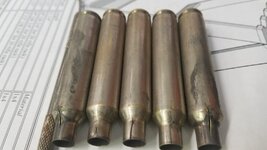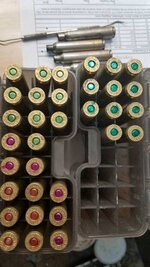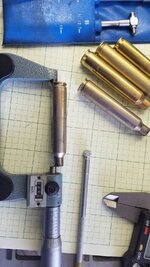- Messages
- 1,703
- Reactions
- 1,573
300RUM cases seem to have a short life. These are nickel FC cases showing burn thru and cracking after about the third/fourth reload and the failure rate is high enough that I usually retire brass after reload #3. It does mean I have to track every piece of brass but on the other hand, I don't shoot many rounds at a time. I've tried both nickel and brass cases and had kind of equal luck with each.

















